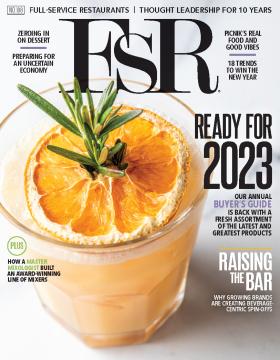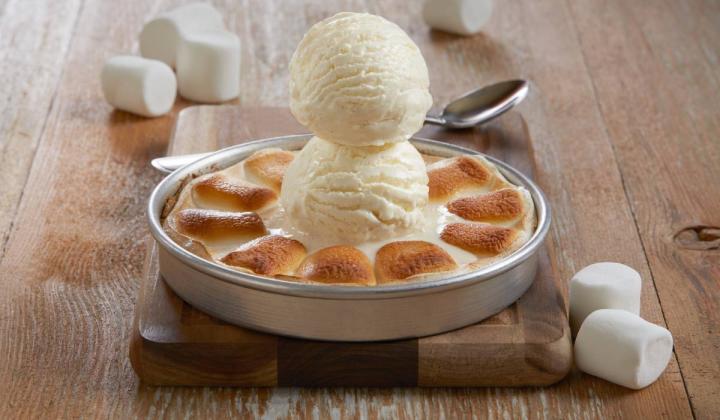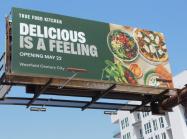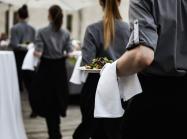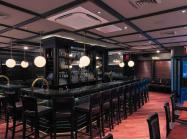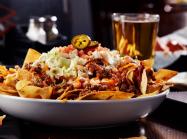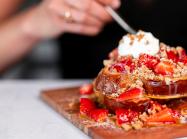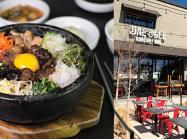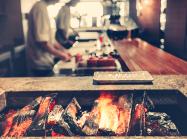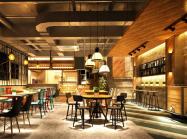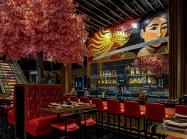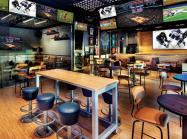The budget-friendly design lowers build-out costs by $1 million.
Despite scaling back on development to channel more resources toward remodels in recent quarters, BJ’s Restaurants has remained committed to reaccelerating its expansion efforts. Now, the casual-dining chain is turning to a more budget-friendly design to help reach its longstanding goal of 5 percent annual unit growth.
The costs associated with constructing new restaurants have risen by over 35 percent since 2019, bringing BJ’s new builds to the mid-$7 million range. As a result, the company’s development department has been busy designing a new prototype that CEO Greg Levin said “takes all the best features of our current restaurant” while reducing build-out costs by $1 million.
With significant cost savings at hand, the company is submitting new plans for the majority of its 2024 pipeline. The development team is working with planning commissions in each city to expedite the process, but Levin said the timeline for approving the new prototypes could cause some 2024 openings to be pushed back later into the year or spill over into 2025. Consequently, new unit growth in 2024 is expected to be on par with 2023 before ramping up in 2025.
BJ’s opened two new restaurants in the first half of the year, pushing its total footprint to 216 units. It expects to open three more by the end of Q4 for a total of five new restaurants in fiscal 2023.
The new prototype comes on the heels of an aggressive push to reduce costs across the board. Last year, the company laid out a plan to identify at least $25 million in annual cost-saving opportunities that would benefit restaurant operating margins without sacrificing quality standards. It surpassed that goal on an annualized basis in Q2 with significant reductions in food, labor, and occupancy costs.
Those savings–along with a 6.1 percent increase in total sales and a 4.7 percent increase in same-store sales–drove restaurant-level margins to 14.5 percent, which was 260 basis points higher than last year and the company’s highest margin level since the pandemic.
“We still have wood to chop to get back to the high-teen pre-pandemic margin levels, but the progress we have made to date confirms the effectiveness of the strategy that we laid out last year,” Levin said. “We’re always going after the commodity basket, we’re always going after labor, and we’re always going after occupancy costs.”
On the labor front, BJ’s surpassed 2019 restaurant manager retention levels and narrowed the pre-COVID gap in hourly team member retention. With more tenured members across both ranks, key productivity metrics like items per labor hour were better than a year ago and better than pre-pandemic levels. Labor and benefits expenses were 36.2 percent of sales in Q2, a 110-basis-point improvement from the same period a year ago when labor expenses were 37.3 percent of sales.
READ MORE:
BJ's Tinkers with Quick-Service Model
BJ's Decides to Cut Some Menu Offerings
BJ's Margin-Building Strategy is Proving Effective
Ongoing initiatives, including using AI to bolster sales forecasting and scheduling accuracy, will unlock more productivity improvements in the back half of the year, Levin said. BJ’s also rolled out a smaller menu in July with 15 percent fewer items. It will continue optimizing labor based on the reduced selection in the coming months.
“We still have to adjust schedules down a little bit based on how this new menu is rolling out, and that should give us additional efficiencies,” Levin said. “Having less items, but the right items for our guests, will allow us to improve our daily execution by increasing repetition of guest favorites while reducing prep hours in our kitchen, both of which can over time contribute to our sales and margin growth goals.”
BJ’s cost of sales was 25.9 percent in Q2, which was 170 basis points favorable compared to Q2 of 2022 and 70 basis points favorable compared to Q1 of 2023. Food costs were flat quarter-over-quarter and slightly deflationary year-over-year. CFO Tom Houdek said the market was “better than expected” with deflation across several key menu items, including ribs, salmon, and cheese.
The company opted to enter into fewer fixed contracts heading into fiscal 2023. That strategy is paying off as prices for certain items continue moving in the right direction. With supply chains normalizing, BJ’s is finding opportunities to enter into longer-term contracts at attractive rates and take some of that risk off the table. The biggest wildcard in its food basket is beef. Levin said there’s been a shift in consumer demand toward indulgent red meat offerings coming out of the pandemic. That’s one area where the company hasn’t locked in prices with suppliers. It’s also an area that is expected to see ongoing inflation in the back half of the year.
Levin said the company is working with suppliers to find ways to bring down food costs while still maintaining the quality and differentiation that are part of the brand’s “brewhouse theater” positioning. As an example, he said the chain won’t budge on its decision to stick with fresh salmon over frozen salmon.
“We heard loud and clear from our consumers that we provide a better quality dining experience, and that comes with better quality products,” Levin said. “So, we are going to continue to do that the right way to move our margins in the right direction.”
The margin-focused plans are working alongside several sales-building roadmaps. BJ’s is updating its loyalty program and building back its late-night business. It also is plowing ahead on its remodeling initiative, which Levin called “a pure traffic driver inside the restaurant.” The program includes a lower-cost update with expanded booth seating capacity as well as a higher-cost upgrade centered around an enhanced bar statement.
BJ’s plans to bring those improvements to 35-40 restaurants this year, up from its original plan of 30 remodels, based on the financial returns the changes are delivering in terms of incremental guest traffic and restaurant profit. More than half of those 2023 remodels have already been completed.
“We’ve been trying to push more for the bar remodel,” Levin said. “The bar remodel can be anywhere from $400,000 to $500,000 up to $700,000, but we end up getting a higher weekly sales average increase. It ends up driving what we consider to be some good ROIs in the mid-teens to 20-percent range.”
From a weekly sales perspective, BJ’s averaged more than $124,000 per restaurant in Q2. It typically is the company’s strongest quarter, with outsized sales during Mother’s Day and Father’s Day as well as throughout graduation season. During the week that included Mother’s Day, the company set a new all-time high weekly restaurant sales average of $140,000, beating its previous weekly record by nearly $10,000.
Looking ahead to Q3, BJ’s is entering what typically is its lowest sales quarter seasonally. It expects same-store sales in the high-3 to low-4 percent range, taking into account less of a pricing benefit as the chain laps over last August’s 2 percent increase.

